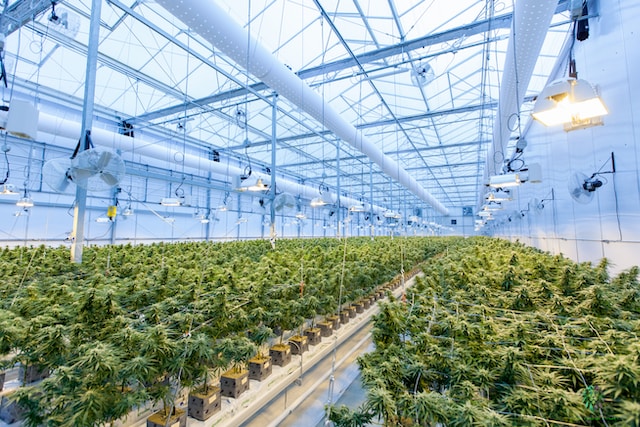Photo from Unsplash
Cannabis cultivation may be a satisfying and gratifying pastime, but professional-level outcomes need expertise, perseverance, and attention to precision. These five strategies will enable you to grow marijuana like a pro, regardless of whether you are an experienced grower trying to step up your game or a novice just starting.
Select the Correct Genetics
The appropriate genetics are the first step in a successful cannabis-producing journey. There are many different strains of cannabis plants, and each one has special traits, including growth patterns, taste profiles, and THC levels. Professional growers are aware of the significance of selecting genetics that are compatible with their objectives. If you’re growing marijuana for medical reasons, you might want to choose strains that are strong in CBD (cannabidiol) or certain terpenes with documented therapeutic properties. On the other side, you could choose high-THC (tetrahydrocannabinol) strains if you’re interested in using them recreationally. While some strains take more experience to grow, others are simpler and appropriate for novices. Before choosing, compare several strains, read reviews, and think about your objectives and degree of experience. Acquiring quality genetics is an investment that can significantly impact your final product. Professional growers understand the importance of choosing the right genetics that align with their goals and pairing them with the best soil for growing cannabis.
Establish a favorable environment for growth.
To get yields of professional caliber, you must provide your cannabis plants with the ideal conditions. Planning and regulating your grow room should take into account variables like temperature, humidity, light, and ventilation. Here are some crucial things to remember:
- Temperature: Cannabis plants do best at temperatures between 70 and 85 degrees Fahrenheit (21 and 30 degrees Celsius), with a modest drop at night. To keep a constant temperature, invest in a quality thermometer and climate control tools.
- Humidity: To avoid mold and mildew problems, humidity levels should be approximately 40-60% during the vegetative stage and lower (30-40%) during blooming.
- Light: For cannabis plants to develop quickly, they need enough light. When growing indoors, think about utilizing premium HPS (high-pressure sodium) or LED grow lights to give the right spectrum and intensity.
- Ventilation: Proper air circulation is vital to prevent mold, improve plant health, and strengthen the stalks. Use exhaust fans and oscillating fans to maintain airflow within your growing space.
- CO2 Levels: Some professional growers supplement their grow rooms with additional CO2 to enhance plant growth, but this is more advanced and may not be necessary for beginners.
Become an expert in nutrient management.
For optimum growth, cannabis plants need a balanced diet of nutrients. A crucial component of expert cannabis production is comprehending nutrient requirements and becoming an expert in nutrient administration. Lack of nutrients or too much of them might cause stunted development, low yields, or undesired results in the finished product. Use a high-quality, well-balanced fertilizer made specifically for cannabis plants, or make a specialized nutrient solution based on the requirements of your plants. When you see any nutritional deficiencies in your plants, such as yellowing leaves or burned tips, make necessary adjustments to your feeding schedule. Keep in mind that different growth phases necessitate various nutrition concentrations. Plants normally require more nitrogen during the vegetative stage than they do during the blooming stage, when they need more phosphorus and potassium.
Use appropriate training and pruning methods.
To increase yields and encourage healthy plant development, professional cannabis producers frequently use a variety of training and trimming procedures. Here are a few such approaches:
- Topping: Topping is removing the tip of the main stem to promote the development of several colas (flowering sites). Increased yields and more bud sites may come from this method.
- Defoliation: Carefully removing leaves can increase ventilation, light penetration, and bud development in lower branches while lowering the danger of mold.
- Super cropping: Super cropping is the process of gently bending stems in order to enhance their flexibility and provide a more uniform canopy distribution.
These techniques require careful execution and may vary depending on your chosen cultivation method (e.g., indoor or outdoor). Research and practice these methods to determine what works best for your specific situation.
Patience and focus on the details
Last but not least, it takes perseverance and steadfast attention to detail to grow cannabis professionally. Cannabis plants develop naturally, and this cycle cannot be hurried. You must keep an eye on your plants every day from germination through harvest, modifying the environment as appropriate and watching for any insect or disease symptoms. Additionally, keeping thorough records of your cultivation procedure may assist you in figuring out what functions well and what doesn’t. Record everything, including nutrition regimens, environmental details, and observations of plant health.
Conclusion
Professional cannabis cultivation is a fulfilling undertaking that blends science, art, and commitment. You may improve your cannabis production abilities and get professional-level results by picking the appropriate genetics, setting up the optimum growing environment, learning nutrition management, putting correct training and pruning procedures into practice, and exercising patience and attention to detail. Always keep in mind that gaining knowledge from your mistakes and enhancing your methods can help you succeed even more in the future. Happy expanding!



